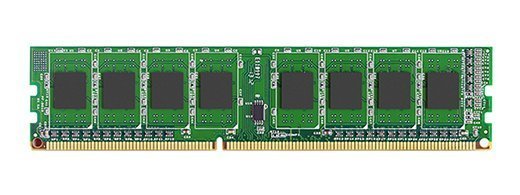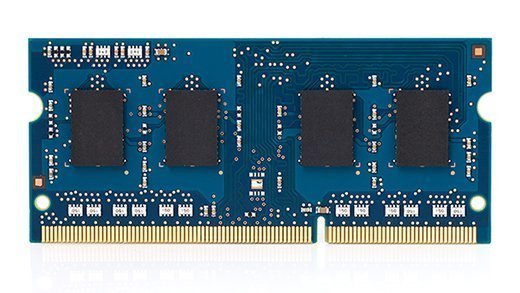DIMM (dual in-line memory module)
What is DIMM (dual in-line memory module)?
DIMM, or dual in-line memory module, is a type of computer memory that is natively 64 bits, enabling fast data transfer.
DIMM is a module that contains one or several random access memory (RAM) chips on a small circuit board with pins that connect it to the computer motherboard. The DIMM stores each data bit in a separate memory cell.

How DIMMs work
DIMMs use a 64-bit data path, since processors used in personal computers have a 64-bit data width. DIMMs are typically used in desktop PCs, laptops, printers and other devices.
A SIMM, or single in-line memory module, typically has a 32-data-bit path to the computer that requires a 72-pin connector. For synchronous dynamic RAM (SDRAM) chips, which have a 64-data-bit connection to the computer, SIMMs must be installed in in-line pairs, since each one supports a 32-bit path. A single DIMM can be used instead. Originally, DIMMs had a 168-pin connector to support 64-bit data transfer.
As faster dynamic RAM (DRAM) was developed, DIMM circuit boards evolved. Modern DIMMs based on fourth-generation double data rate (DDR4) SDRAM chips use 288-pin connectors to attach to the computer motherboard to enable the increase in data throughput. As clock speeds of the RAM chips increased, the 64-bit path handled increasing amounts of data.
Another evolution in DIMMs is the use of cooling fins or structures attached directly to the DIMM. The increase in chip density in typical 8 gigabyte or 16 GB DIMMS, and the increase in clock speed, led to an increase in heat production. This was made worse by the fact that DIMMs based on DDR4 RAM chips can be produced in capacities up to 64 GB.
Cooling structures on the DIMM help vent that heat into the computer enclosure and away from the motherboard and central processing unit (CPU).
Types of DIMM
The most common standard DIMMs, with a typical length of 5.5 inches and height of 1.18 inches, include the following:
- Unbuffered DIMM (UDIMM), used mainly on desktop and laptop computers. Although they run faster and cost less, UDIMMs aren't as stable as registered memory. Commands go directly from the memory controller residing in the CPU to the memory module.
- Fully buffered DIMM (FB-DIMM), usually used as main memory in systems that require large capacities, such as servers and workstations. FB-DIMMs use advanced memory buffer (AMB) chips to boost reliability, maintain signal integrity and improve methods of detecting errors to reduce soft errors. The AMB bus is split into a 14-bit read bus and a 10-bit write bus. Having a dedicated read/write bus means reads and writes can happen at the same, which results in increased performance.
- Registered DIMM (RDIMM), often used in servers and other applications that require stability. RDIMMs, also known as buffered memory, feature onboard memory registers that are placed between the memory and the memory controller. The memory controller buffers command, addressing and clock cycling, and directs instructions to the dedicated memory registers rather than directly accessing the DRAM. Consequently, the instructions could take about one CPU cycle longer. However, the buffering reduces the strain on the CPU's memory controller.
- Load-reduced DIMMs (LR-DIMMs), which use isolation memory buffer (iMB) technology that buffers the data and address lanes, reducing the load on the memory controller. The iMB chip also buffers data signals, unlike the register on RDIMMs, which only buffers command, addressing and clock cycling. The iMB chip isolates all electrical loading, including data signals of the DRAM chips on the DIMM from the memory controller. As a result, the memory controller only sees the iMB and not the DRAM chips. The memory buffer then handles all the reads and writes to the DRAM chips, enhancing capacity and speed.
- Small outline DIMM (SO-DIMM), which is about half the size of a standard DIMM, at 2.74 inches long. Both types of DIMMs are most commonly 1.2 inches tall, but both are made in a very low profile (VLP) format that is only 0.8 inches tall. SO-DIMM is mainly used for portable computing devices such as laptops and tablets. It differs from standard DIMM in that the DDR4 SO-DIMM has 260 pins versus 288 pins for the DDR4 DIMM. Standard DIMMs are used in PCs and servers. The VLP DIMM was developed to meet the space requirements of blade servers.

Editor's note: This article was revised in 2024 by TechTarget editors to improve the reader experience.






